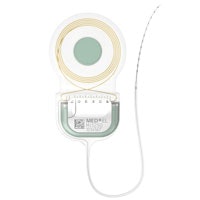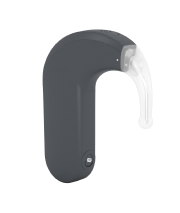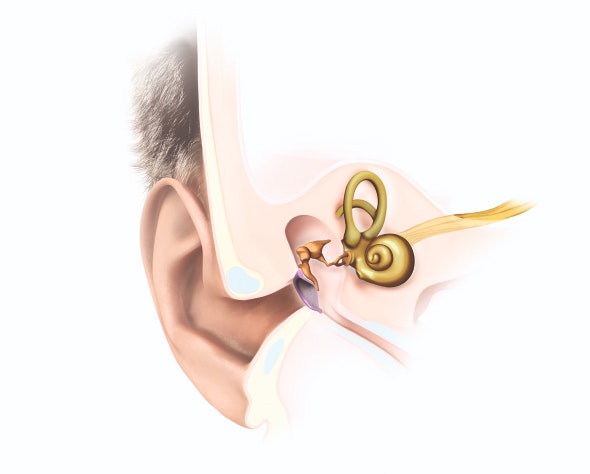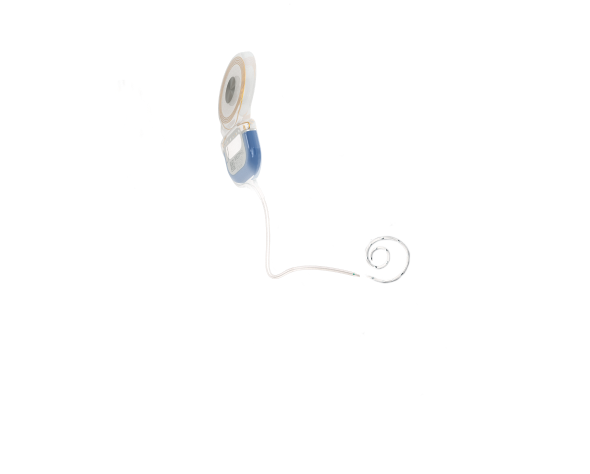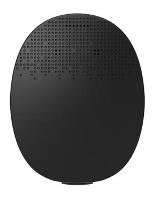Cochlear Implants
Cochlear implants can fill your world with the joys of sound. Find out how you or your child could experience closest to natural hearing and even enjoy music with a cochlear implant.

A New Way to Hear
Was your child born profoundly deaf? Do you have hearing loss but find your hearing aids aren’t helping anymore? Can you only hear in one ear?
If you can answer yes to any of these questions, then a cochlear implant may help you or your child to hear better in everyday life. Getting a cochlear implant is a big decision, but it can be life-changing. Why? Because there are more benefits than just improved hearing.
- Easier to socialize with friends
- Improved communication with family members
- Better hearing in noisy settings, like restaurants
- Easier listening on the phone
How Does a Cochlear Implant Work?
Cochlear implants are designed for people with moderate-to-profound sensorineural hearing loss. With this type of hearing loss, the hair cells in the inner ear are damaged and can’t detect sounds properly. A cochlear implant bypasses these damaged hair cells and sends electric signals to the brain, where they are interpreted as sound.
A cochlear implant system has two main components. The externally worn audio processor detects sounds and sends them to the internal implant, which is placed just under the skin behind the ear.
Learn how cochlear implants work by watching this video.
The Perfect Match
We go further than just offering you the best sound quality—our audio processors have all the features you’re looking for in comfortable designs you’ll love to wear. And our implants are designed to deliver outstanding reliability and MRI safety,* along with a lifetime of better hearing.
And with the help of our apps, you can make hearing with your cochlear implant system even simpler and more convenient.

A Lifetime of Hearing
Getting a cochlear implant is a big decision. Your implant will be with you for many years to come, so it’s important to think about the impact your implant will have, both now and in the future.
At MED-EL, we design everything with the future in mind. Our implants are built for long-term reliability, so you can experience years of uninterrupted hearing. We make it easy to upgrade to the newest audio processor, letting you benefit from the latest technology. Our SYNCHRONY series of implants have outstanding MRI safety* and are covered by our MRI Guarantee, meaning you’re prepared for whatever life brings.
A cochlear implant is a decision for a lifetime, and MED-EL will be with you all the way.
"My quality of life has changed tremendously since my implant"
The Next Steps
What can you expect next? Here’s an outline of the process of receiving a cochlear implant.
1
Assessment
First, you’ll undergo routine assessments to ensure you’re a candidate for a cochlear implant and if there are any additional factors your cochlear implant team should consider. Your clinical team will walk you and your family through the specifics of what to expect in the following steps.
2
Implantation
To implant a CI, the surgical procedure is straightforward and usually lasts between 1–2 hours under general anesthesia. Recipients are usually back on their feet the next day. Your hospital stay may last one or more days, depending on your individual needs and what’s typical in your area.
3
Activation
About four weeks after implantation, you’ll have your first fitting. This “activation day” is when your audiologist will turn on your audio processor for the first time and you’ll hear your first new sounds. The audio settings of your processor will be adjusted to fit your hearing preferences.
4
Rehabilitation
After activation, it’s important to follow up with a rehabilitation program so that you can adapt to hearing through your cochlear implant. Rehabilitation is essential to make the most of your implant. It can be done with speech-language professionals and at-home listening exercises.
* The SYNCHRONY 2 or SYNCHRONY cochlear implants are MR conditional. Recipients with a SYNCHRONY 2 or SYNCHRONY cochlear implant may be safely MRI scanned at 1.5 and 3.0 Tesla following the conditions detailed in the instructions for use.
** IP68 rating: Waterproof for immersion in water up to a maximum depth of 1 meter for 60 minutes. WaterWear is recommended for swimming and showering.
^ Unless required for diagnostic reasons.
1. Kim, B.G., Kim, J.W., Park, J.J., Kim, S.H., Kim, H.N., & Choi, J.Y. (2015). Adverse events and discomfort during magnetic resonance imaging in cochlear implant recipients. JAMA Otolaryngol Head Neck Surg. 141(1), 45–52. doi: 10.1001/jamaoto.2014.2926. http://archotol.jamanetwork.com/article.aspx?articleid=1936465
Contact Us
Don’t wait any longer to take the next step. Our team of hearing professionals is ready to answer any questions you may have to help you decide what is right for you.
Get in Touch
Would you like more information on our hearing loss solutions? Just fill out our simple contact form and we’ll get back to you.


